Liliana Nightgown¶
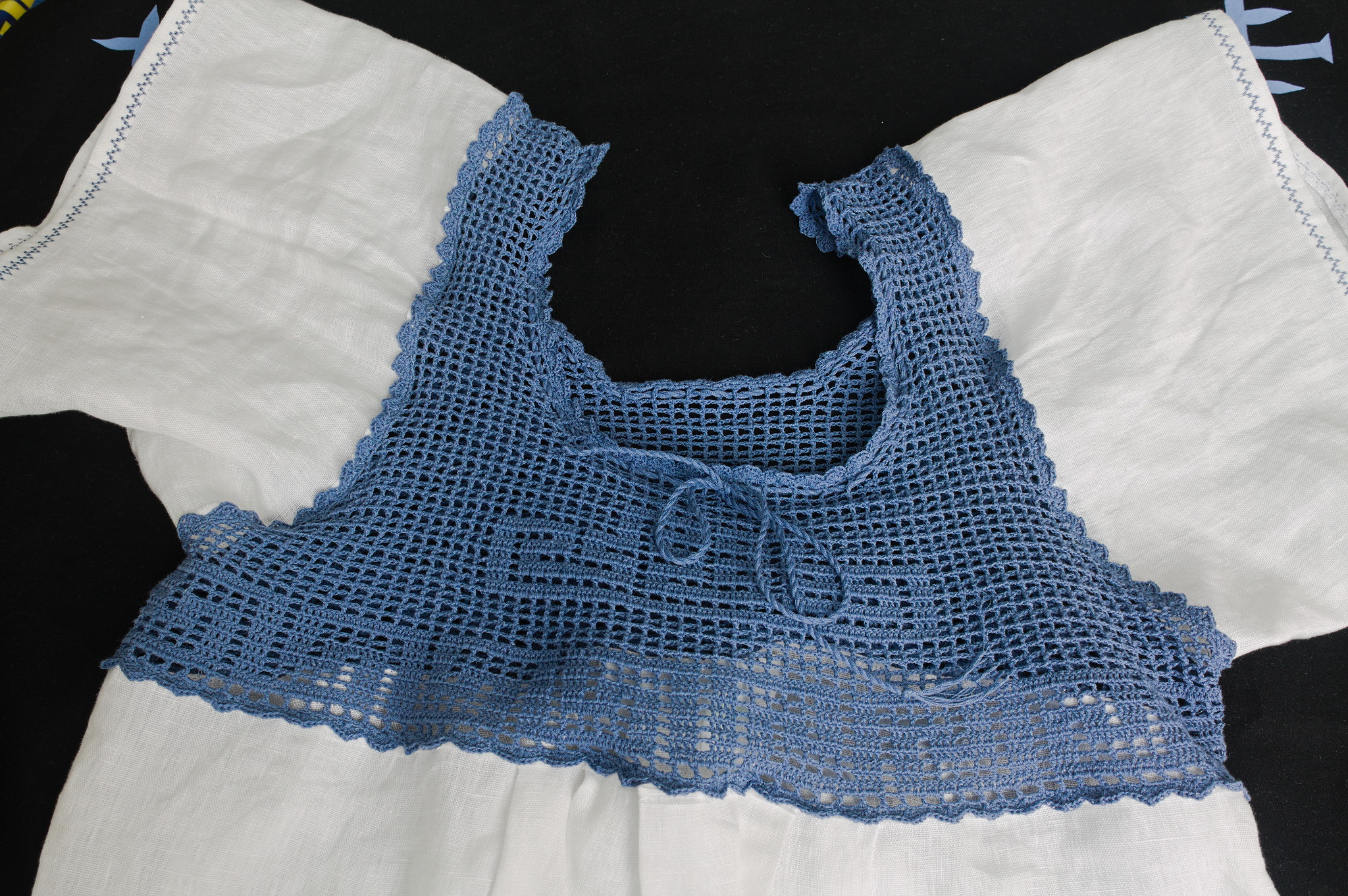
This nightgown is named after my great-aunt who used to make nightgowns with a crocheted yoke and a simple rectangular cotton body for the whole extended family.
While it’s not an historical pattern, it does bear a lot of resemblance to the simplest type of late victorian and edwardian chemise, and it can definitely be used as one.
Most of the time and skill required for this pattern is in the crocheted yoke (for which at the moment there isn’t a real pattern, but just the shape required); the sewing part is based on simple rectangles, straight seams and just a few pleats for shaping.
Materials¶
Fabric¶
About 1 – 1.5 m double width (i.e. 140 - 160 cm wide) lightweight cotton or linen fabric.
In the 1980s my great aunt used mostly cotton prints, but of course white shirt linen is very confortable alternative (and since it’s underwear it doesn’t have to be the nice dense kind, but lighter and cheaper options are fine).
Yarn¶
One ball thin crochet cotton or linen yarn.
The yoke is worked in a lace stitch; for a fine linen one, especially if used as a chemise, it can be something thin enough to be worked with a 1 – 1.5 mm hook, but my great aunt answer to that suggestion would have been “make it yourself” and she used a relatively thicker yarn with a 2 – 2.5 mm hook.
Alternatively, you can use 0.25 m of lace fabric.
Notions¶
sewing thread matching the yarn;
sewing thread matching the fabric.
Yoke Pattern¶
Measurements¶
This pattern uses the Aldrich Drafting System.
You need to take the following measurements:
bust_circ(G04)Bust circumference.
waist_circ(G07)Waist circumference.
hip_circ(G09)Hip circumference; this is not used in the yoke pattern, but will be needed later when cutting the body of the nightgown.
across_back_b(I08)Width of the back from armscye to armscye.
neck_circ(G02)Circumference at the base of the neck.
neck_back_to_waist_b(H19)Vertical distance from neck to waist on the back.
the file ../../drafting_methods/aldrich/aldrich.vit is used by
default by the pattern file and has the list of needed measurements.
Pattern¶
Get the valentina file for the pattern,
liliana_nightgown_yoke.val.
Fabric Pattern¶
After making the yoke, try it on and measure the distance from the end of the yoke to where you want the nightgown to end, plus 2.5 cm for sewing allowances.
Tip
A good length is around knee level (just above or just below): for a longer garment a wider hem circumference than 160 cm is recommended, which can be reached by adding triangular gores to the sides.
The body of the nightgown is a rectangle as high as the distance
measured above and at least 20 cm wider than the hip_circ
measurement, up to the full width of the fabric.
The sleeves are two rectangles 20 cm high ad as wide as the full length of the armscyes of the yoke plus 2-4 cm.
Instructions¶
Yoke¶
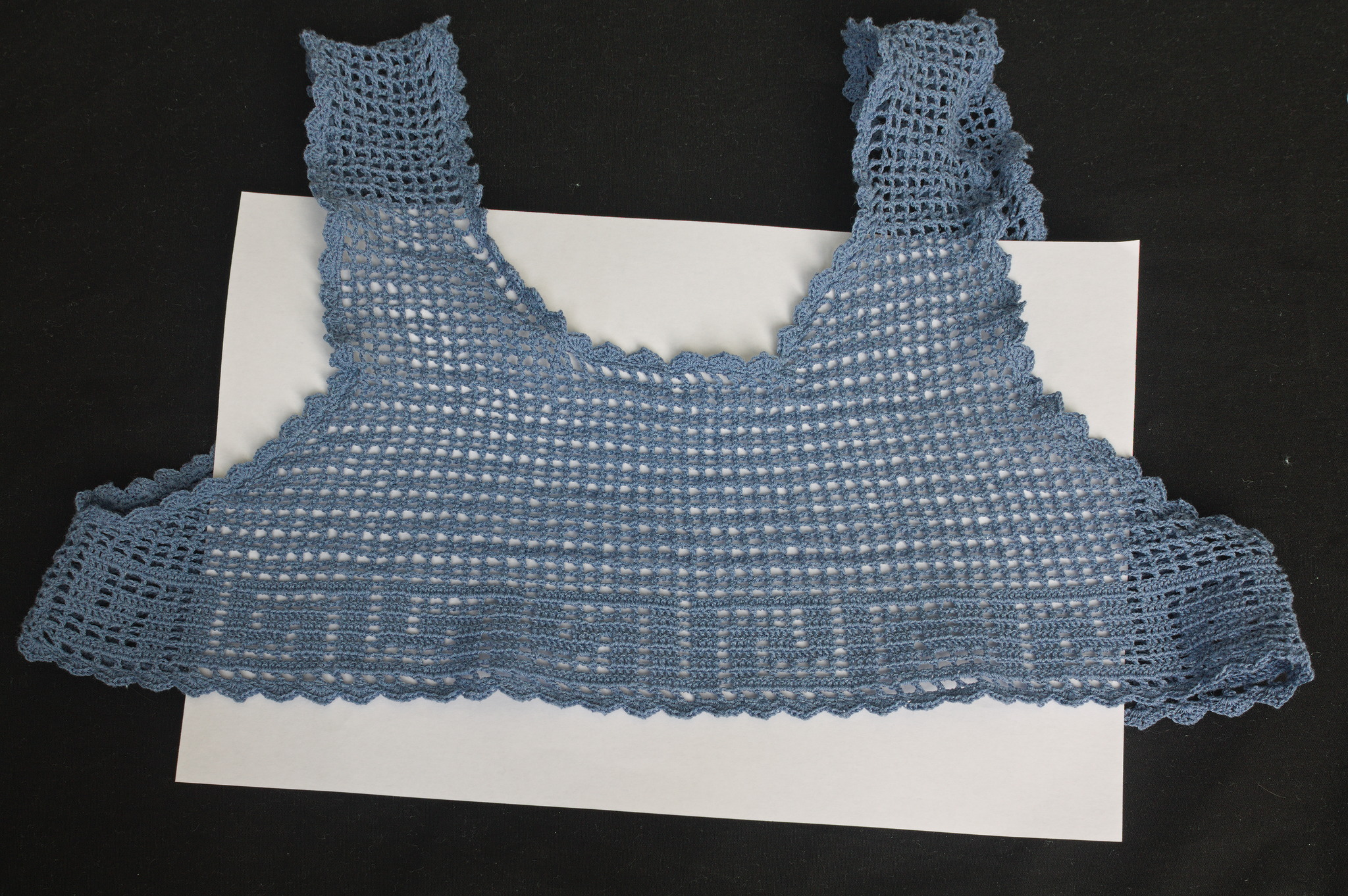
The back of the yoke: other than the meander band around the bottom it’s completely made of empty squares.¶
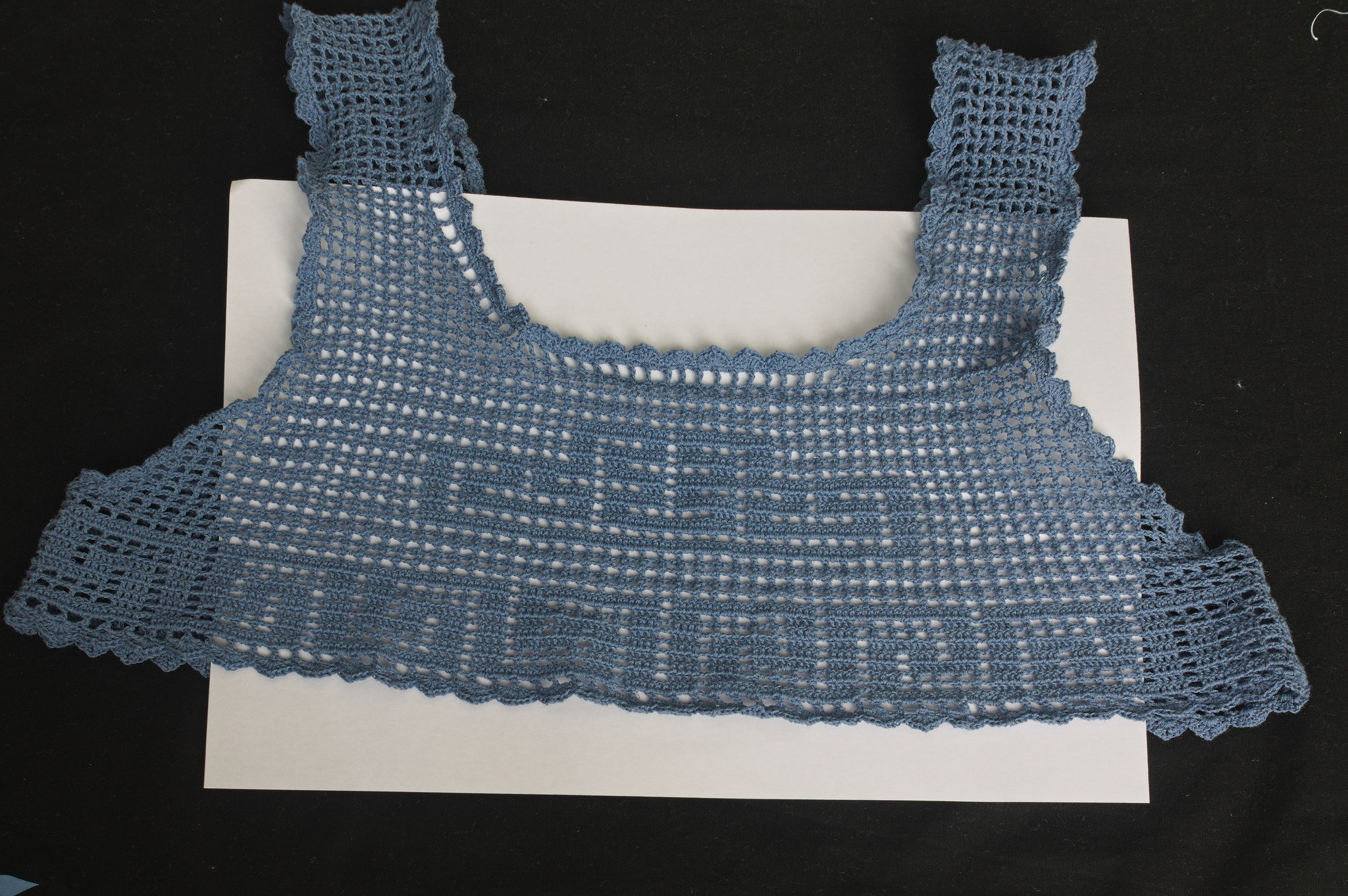
The front of the yoke: after completing the meander band at the bottom, the back has been used as a reference to center a design in the middle of it.¶
Following the shape of the pattern, without the sewing allowances, make the yoke twice in filet crochet, starting with a simple back and adding a decorative pattern to the front.
Alternatively, use any other tecnique (knitting, bobbin lace, etc.) to make two yokes (with no sewing allowances) or cut them in fabric with sewing allowances.
Join the sides and shoulders of the two yokes in a way that is appropriate for the tecnique used.
Cutting¶
Proceed with the measurements of the fabric pattern above and cut the body and the two sleeves.
Sewing¶
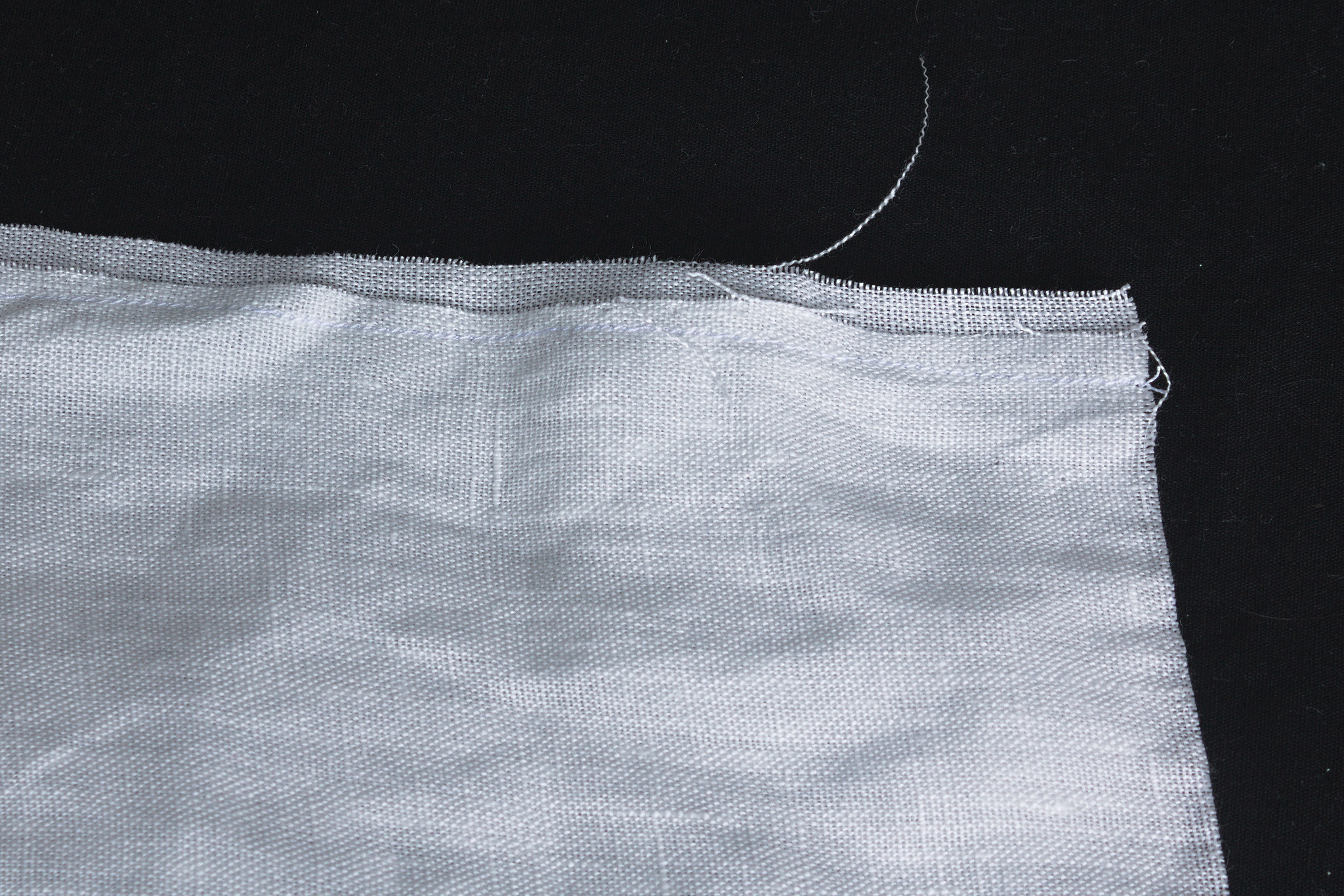
Using thread that matches the fabric, sew the lenght of the body with a flat felled seam: wrong sides together align the one edge of the fabric at 5 mm from the other edge and sew with 1 cm sewing allowance.
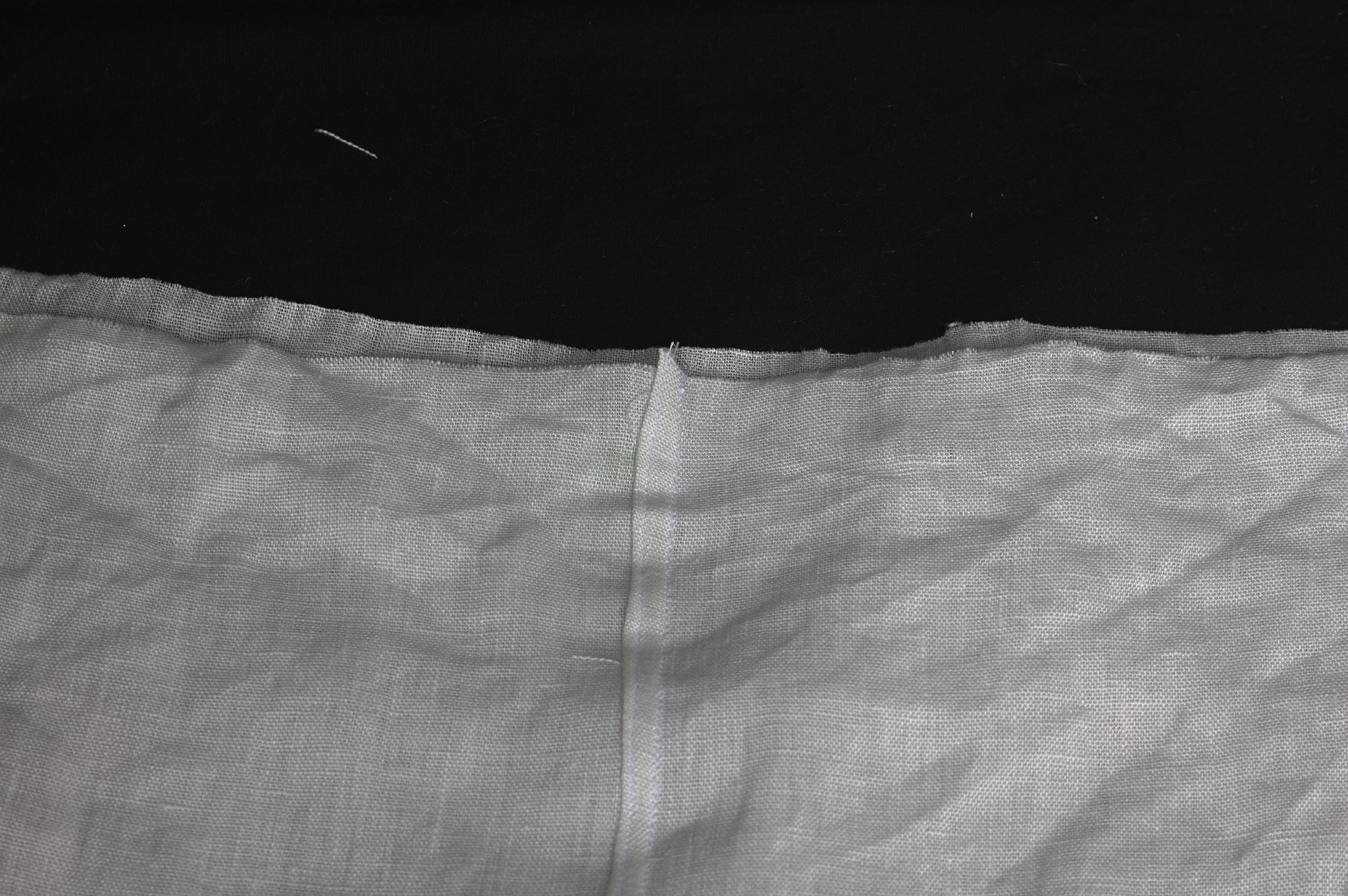
Press, fold and press the wider allowance so that all raw edges are covered and topstitch.
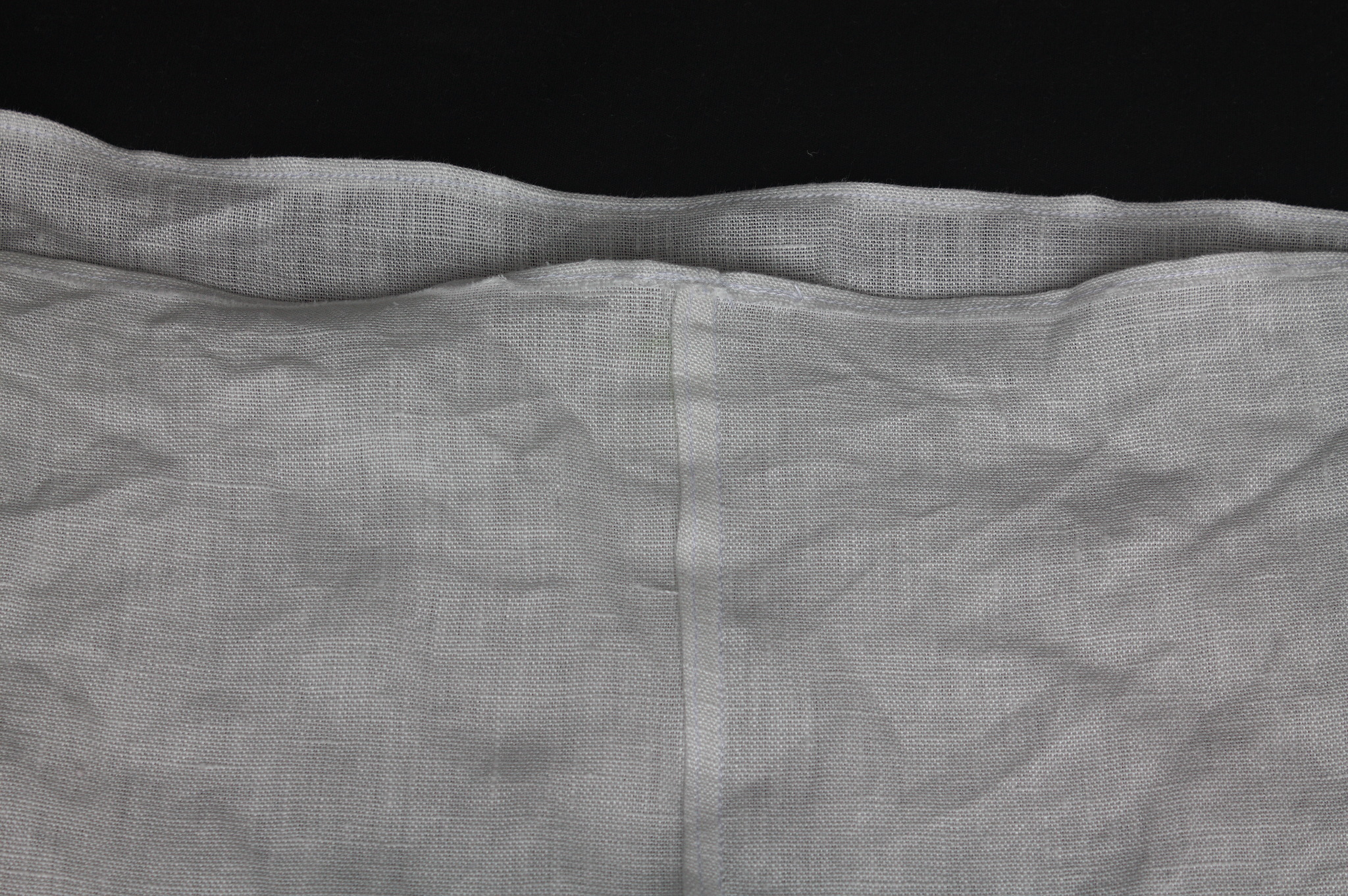
Fold down the top edge of the fabric once 5 mm towards the right side, sew about 2 mm from the fold.
Do the same to the sleeves: flat fell the sleeve in a short tube, and fold down its top edge.
Tip
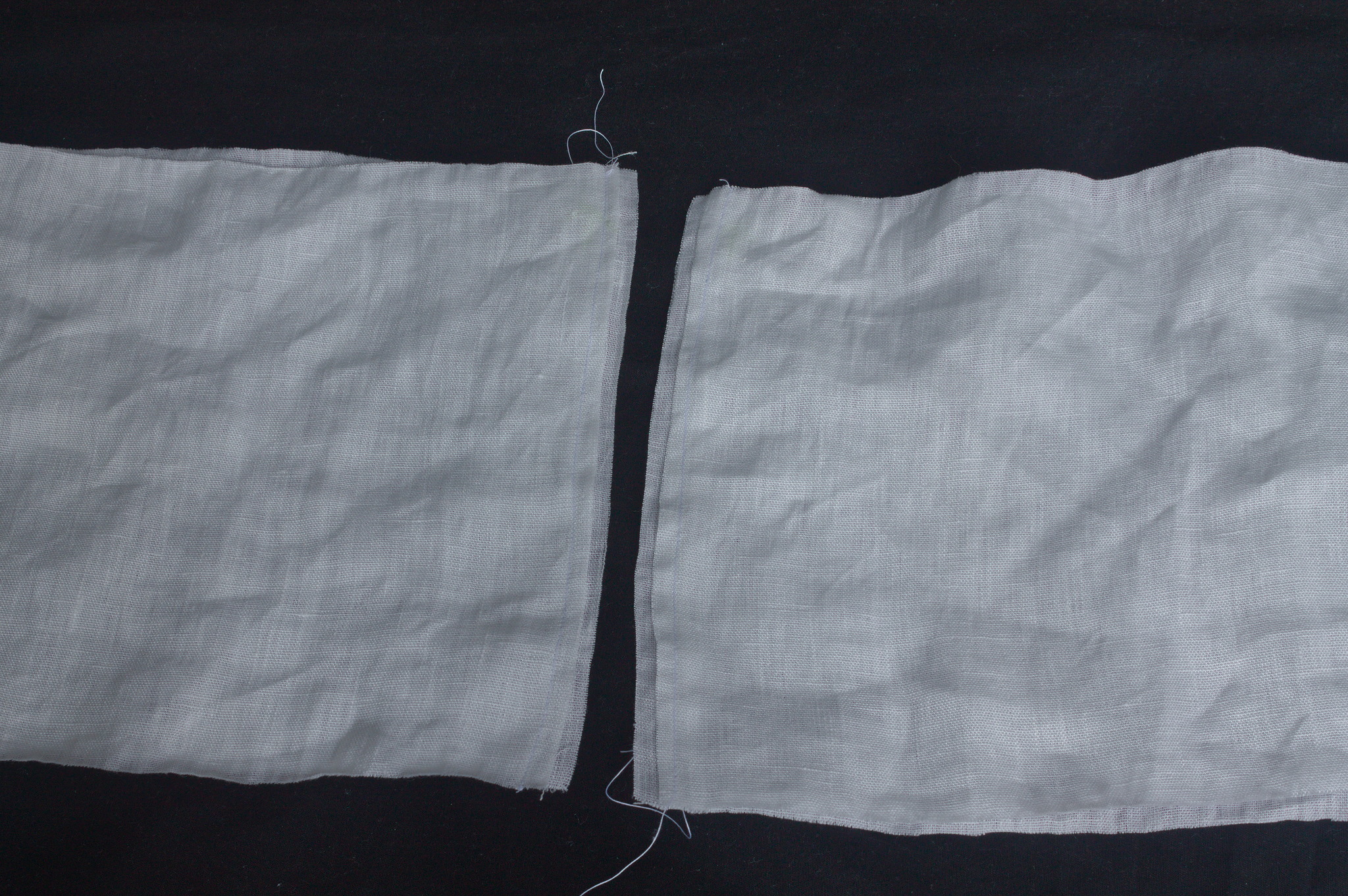
Flat fell the seams of the two sleeves so that they are symmetrical, and then attach them to the yoke with the fell facing towards the back.
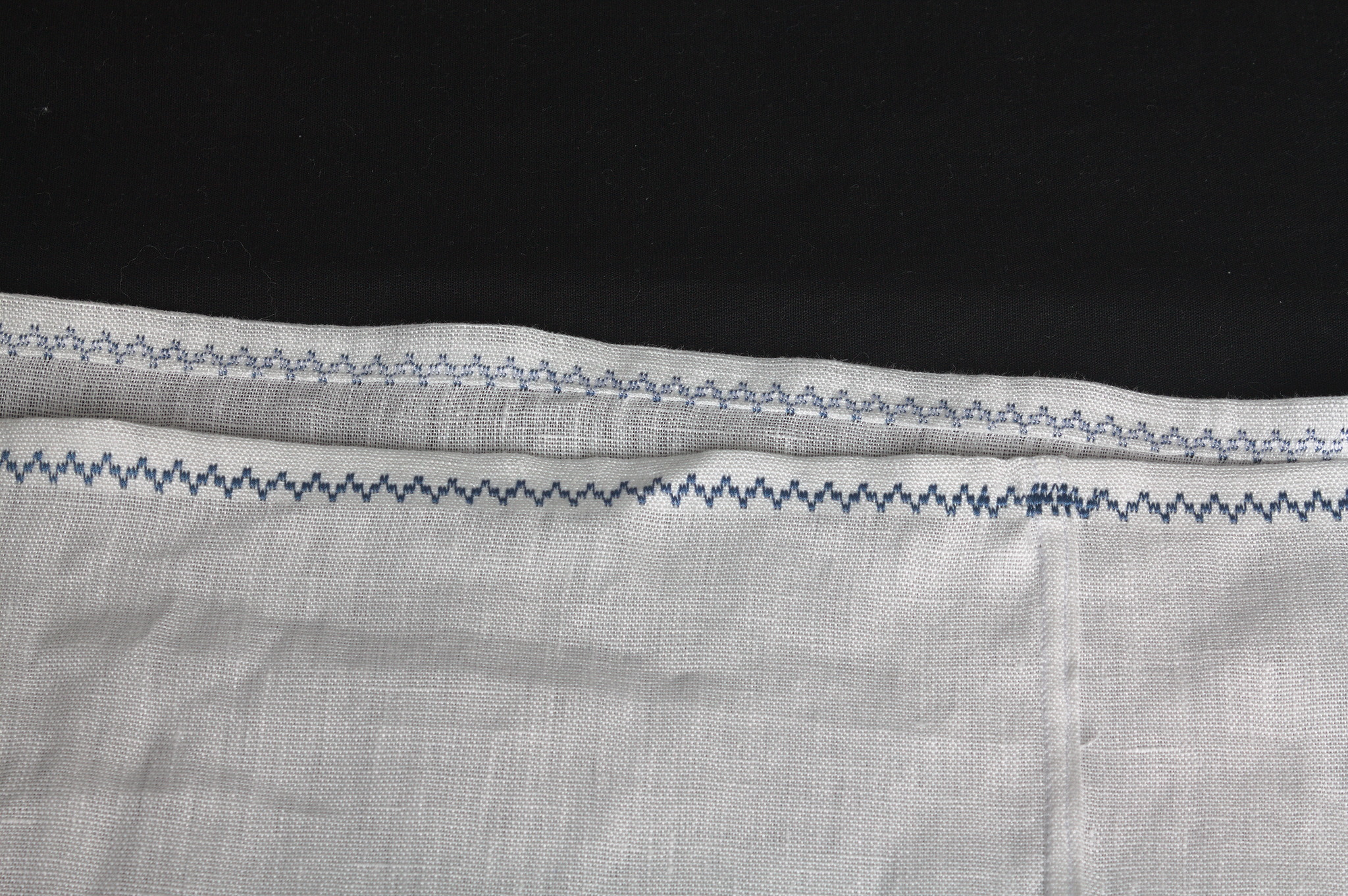
Fold down the hem of the nightgown twice 1 cm and topstitch; if your machine has a fancy stitch that visually resembles the yoke you can use that in the thread that matches the yoke, otherwise use a simple straight stitch in the thread that matches the fabric.
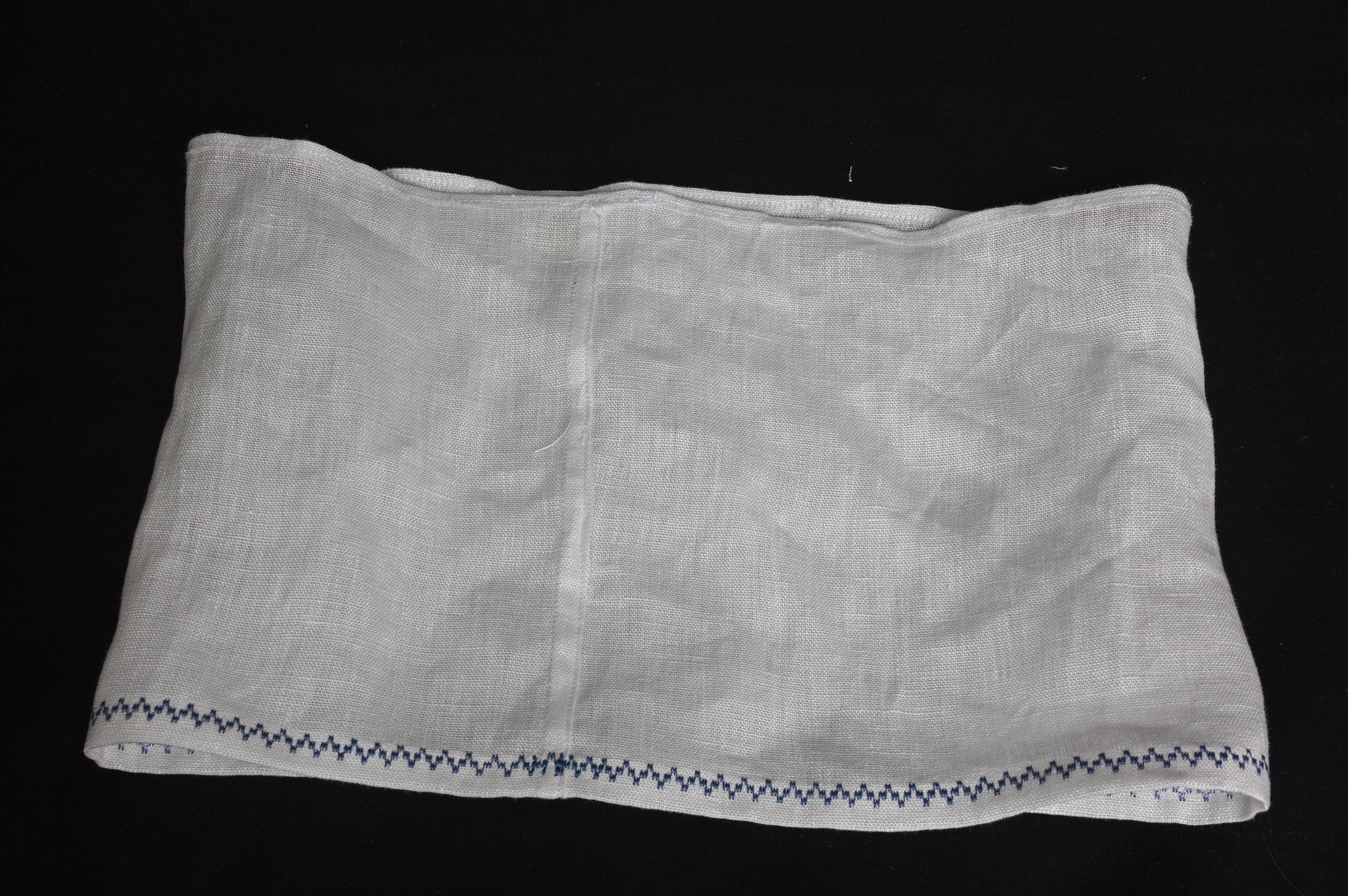
Do the same to the hem of the sleeves.
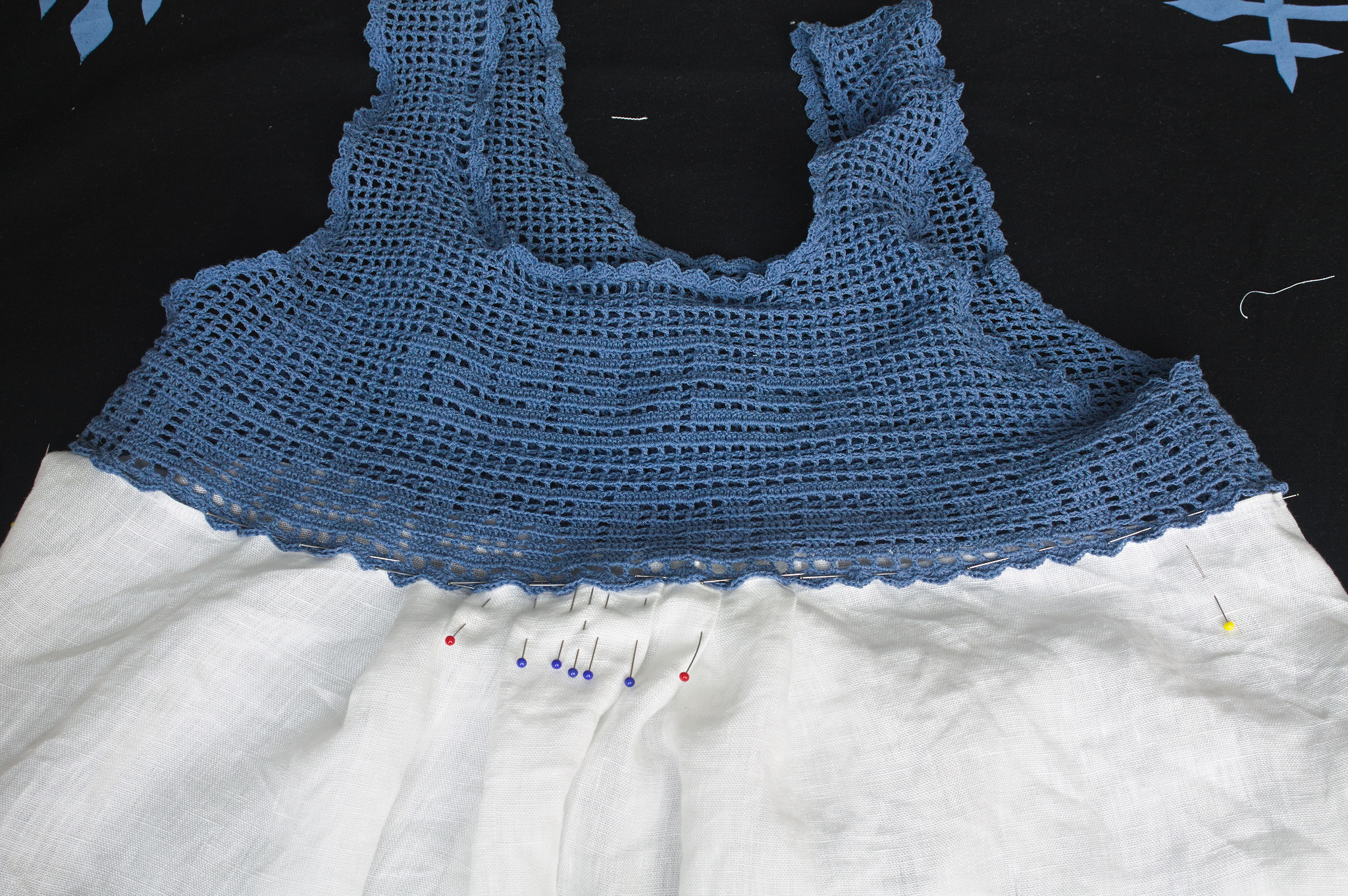
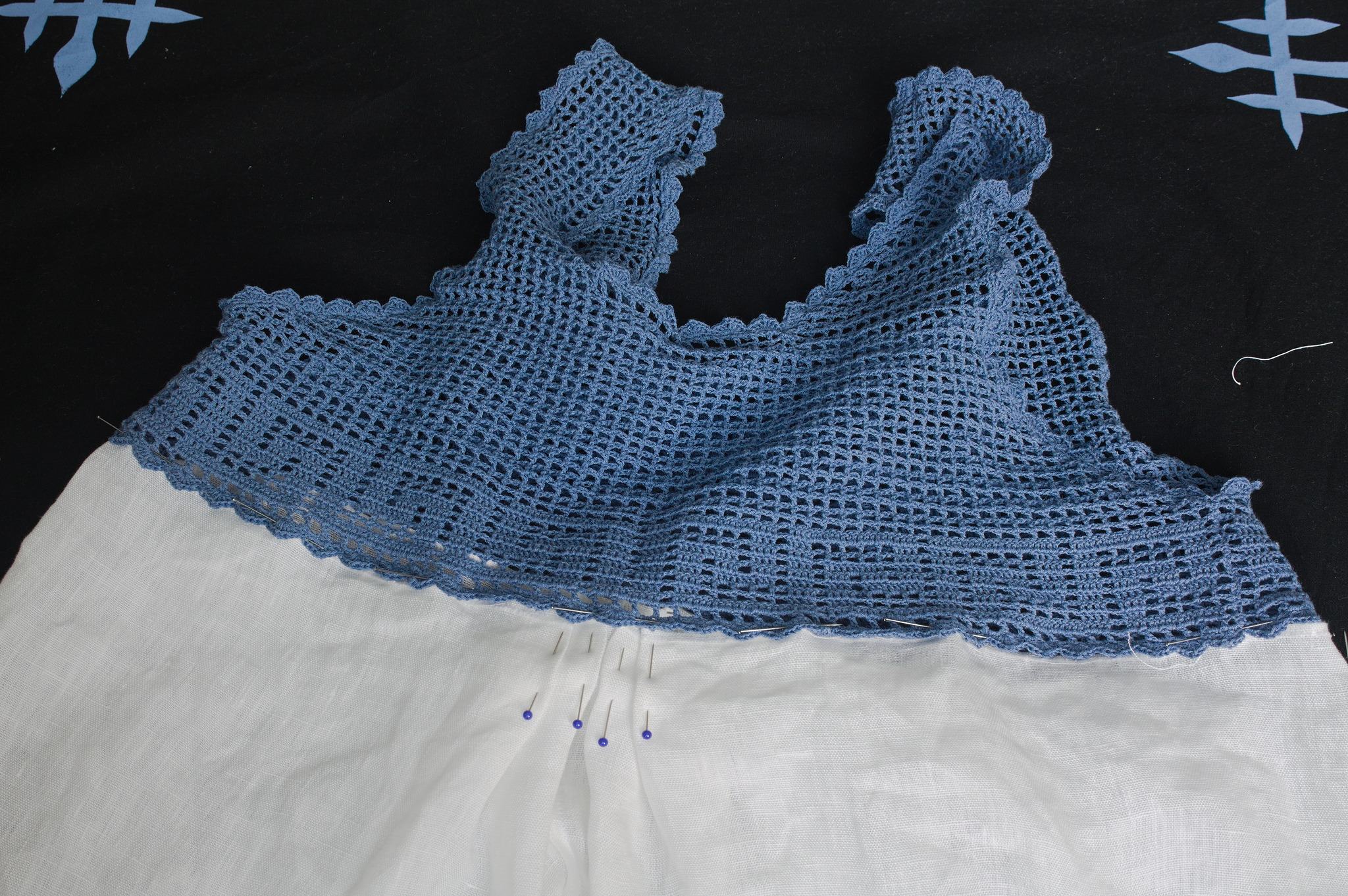
Pin the body to the lower edge of the yoke, with the right side of the body on the wrong side of the yoke, overlapping by 5 mm excluding any scalloped edge of the yoke.
Start by aligning the center back with the flat felled seam, the the center front with the opposite side of the body, and the quarter points of the body on the front side of the yoke, about 2 cm from the sides; distribute the excess fabric around the center front and back by making pleats that face towards the center back.
Using thread that matches the yoke, topstitch with a narrow zig zag.

Repeat the same to the sleeves, aligning the seam with the bottom of the armscye and making a box pleat on the top of the shoulder.
Gallery¶
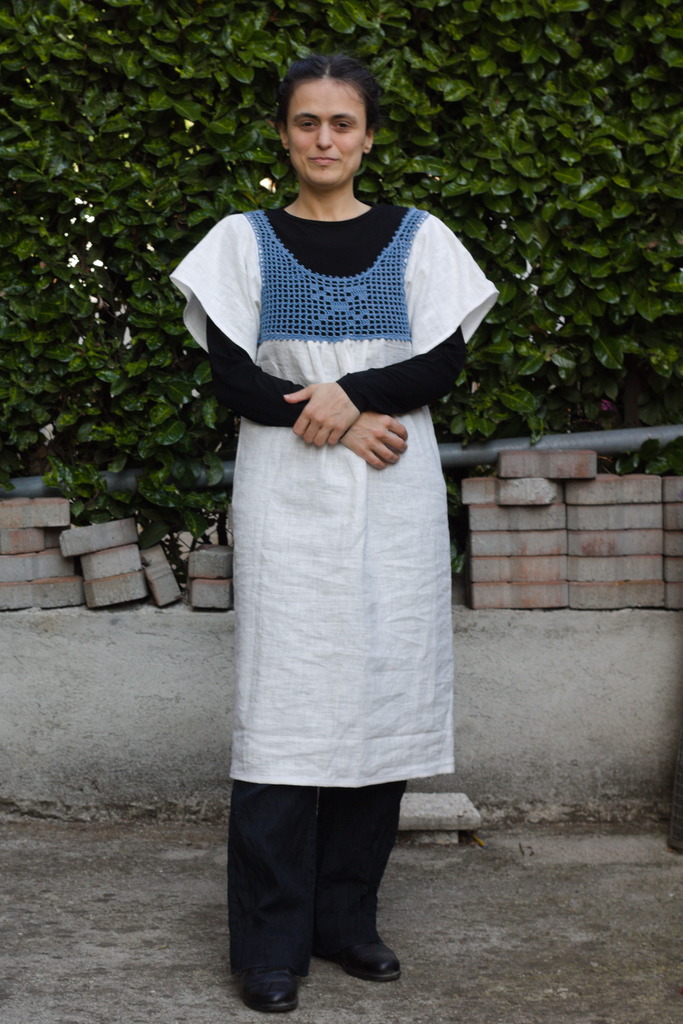
The first version of the nightgown with the yoke worked with thicker yarn and the body in white ramie.¶